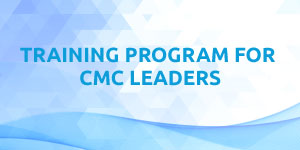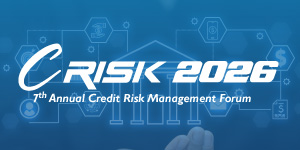Free knowledge to monitor the world of events. Have a look at our must read Blogs on Pharma, Finance, HR, Health and Cross Industry.
Managing Strategic Accounts in the Pharmaceutical Industry
2022-07-19
Key Account Management (KAM) in the Medical Sector, Prescription authority has recently been divided across organizations, committees, or networks of medical, social, administrative, payer, and patient representatives.
Previously, it was solely in the hands of the individual doctor. The pharmaceutical sector is adapting Key Account Management (KAM), also known as Strategic Account Management, as its main business model in response to this growth of decision-making groups.
The main characteristic of a key account is that a decision-making unit, rather than a single physician, makes decisions on which medications to prescribe. This unit is made up of numerous healthcare-related functions. A major distinction for successful strategic planning is that not all accounts are key accounts.
In the pharmaceutical industry, there are essentially two main sorts of accounts that call for different strategies.
The traditional pharmaceutical chains and distributors.
Hospitals, hospital networks, and payers.
Each business strategy's priorities are a little bit different. Typically, turnover targets, margins, discounts, and portfolio/basket penetration or share are what drive pharmacies and wholesalers. Cost/benefit ratio, level of partnership, turnover/profit, and decisions based on evidence-based care, forms, and other non-financial characteristics are what drive hospitals, payers, patient groups, and communities.
The three levels of accounts in Pharmaceutical Industry
The first level is the fundamental Account, which in this illustration may be a single hospital or a sizable pharmacy. We shouldn't normally concentrate our KAM strategy on this "critical" account.
A national wholesaler or a hospital chain could stand in for the second level, both of which would make excellent targets for a Key Account Manager.
Key strategic authorities, payers, and worldwide wholesalers are represented at the third level (Strategic Account Management level). It involves a specialized strategy centered on shared value generation and the formulation of a shared corporate strategic plan. These are undoubtedly "must-win" accounts where top managers as well as KAM must play supporting roles.

A KAM strategy must take into account these 5 factors to be effective:
- Obtaining senior management and other company departments' support
- Relationships that last, trust, and a focus on the consumer
- Creation of mutual value
- Ensuring that problems with market access are resolved
- A must-have is direct backing from senior management and all organizational structures.
How to improve your KAM skills
Pharma businesses must switch from tactical marketing to customer-focused strategic account management if they wish to provide true key account management. For many people, this entails improving KAM capacities. Yet how? Examining tried-and-true best practices from other industries can be a beneficial resource.
Here are six actions to follow in order to make sure your account management skills are up to date. Be specific about what you mean in your business when you refer to a "Key Account." Not all clients qualify as Key Accounts. The following are the six steps to assuring account management capabilities:
- Make sure you know exactly what is needed.
- Evaluate the capacity levels at present
- Examine your needs for development
- Create a program to develop your capabilities.
- Include supporters in the program development.
- Outcomes-based using predetermined measurements

Major Takeaways
- KAM is your firm' operational strategy; it's a business model, not a sales strategy.
- Not every account requires a KAM approach at any one time; instead, it is crucial to recognize, categorize, and rank consumers.
- The number of KAMs and the number of sales reps are different. When it comes to KAMs, some locations have none while others have many.
- KAM focuses on creating long-lasting strategic alliances with the right kinds of businesses and the right individuals working for them.
- KAM is more than just meeting sales goals; it's about achieving and maintaining company goals for the following five years.
- KAMs must collaborate with brand teams to comprehend the patient journey, map out the essential decisions to be made, and identify the decision-makers.
- Being a voice within the corporation is what KAM is all about.
- KAMs are the conductors of their surroundings; they are aware of the appropriate individuals and are aware of what is required and when it is required.
- KAMs must make sure they are knowledgeable about and comprehend various company functions, and they must be aware of when they want the assistance of colleagues.
- Customer-centric thinking needs to replace brand-centric thinking in the pharmaceutical industry.
- The objective is to comprehend consumer needs and offer suitable help.
- Building good relationships that can develop into partnerships is the key to success.
- Every program should be assessed, and future plans should take into account client feedback.
Do you want to understand more about Strategic Account Management ? Join us at the Leading a Strategic Account Management Approach in Pharma MasterClass on 27th to 28th September, 2022.
By Rajeethan Thaventhiran, SEO & IT Executive, GLC Europe, Colombo Office, Sri Lanka.
Get a feel for our events

Training Program for CMC Leaders - EU edition
27th October 2025 - 16th January 2026
Rich with practical insights and real-world applications
learn more >>
Training Program for CMC Leaders - US edition
27th October 2025 - 16th January 2026
Rich with practical insights and real-world applications
learn more >>
Mastering the Common Technical Document (CTD) for Biologics Masterclass - EU edition
12-16 January, 2026
From guidelines to submissions
learn more >>














